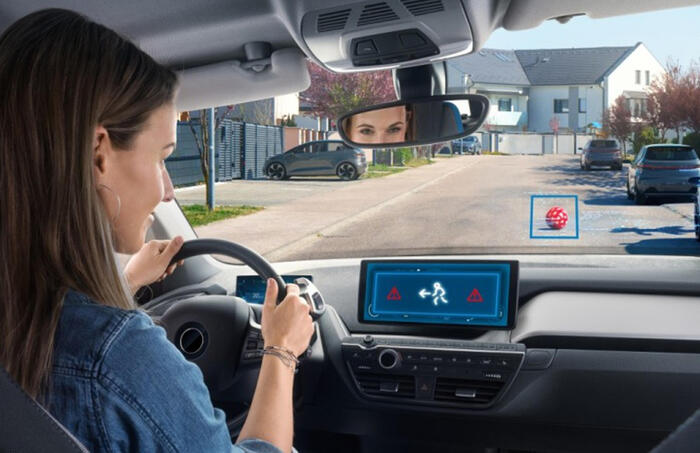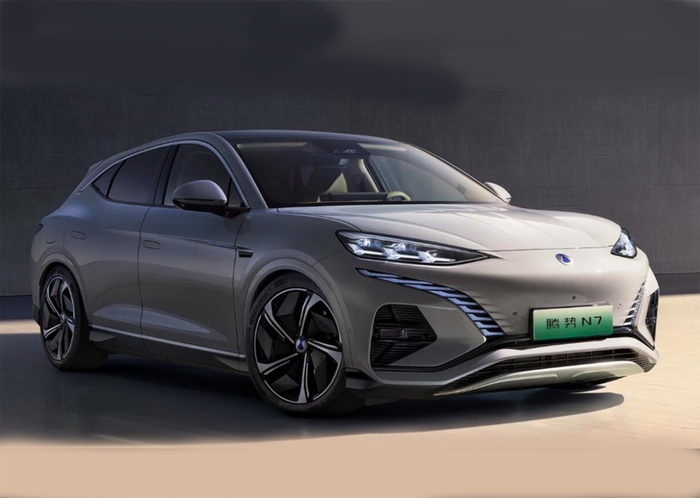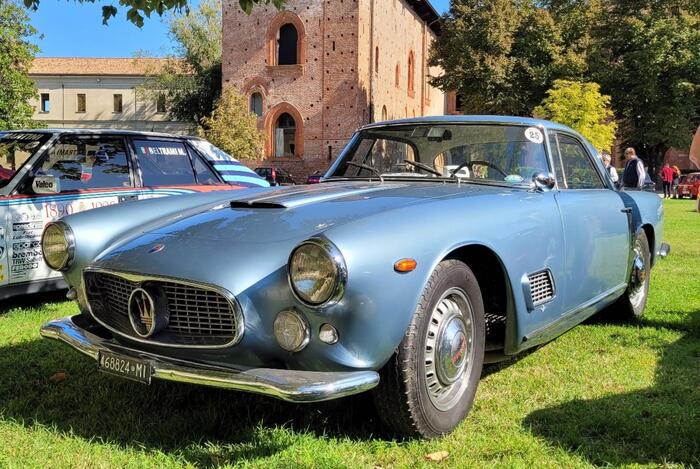Enlarge image
Cleanly bypassing the need: The new cars presented by Mercedes at the IAA in Munich are electric, but they are all heavy, large and expensive luxury cars.
Photo: Daimler
What do Mercedes EQE, BMW iX and Audi E-tron GT have in common?
They were in the limelight at the IAA (last day of the fair: September 12th), are electric and cost more than 70,000 euros, sometimes significantly more.
But above all: These cars are all designed by the needs of most people.
The Dickschiffe thus symbolically represent an impression that this IAA also conveyed elsewhere: What was offered seemed to some extent removed from the wishes and expectations of motorists - regardless of whether they are classic tin fans or new ideas for the future Looking for.
Four reasons why the IAA does not advance the automotive world:
Reason 1: Many cars are too expensive
The auto industry is in a quandary, and so is the IAA.
On the one hand, the industry has understood that it has to rethink and drive the mobility transition.
Electric cars therefore dominate the fair.
But the old principle of "faster, stronger, wider" is being pursued, now in the form of electric battleships that weigh several tonnes and are five meters long.
This in order to turn e-mobility into a lucrative business.
An analysis from 2020 showed that Germans want to spend an average of around 27,000 euros on their next vehicle.
Seen in this light, the most exciting novelty in Munich is likely to be the VW ID electric car.
Be life.
It would be one of the first vehicles to significantly undercut this value, excluding subsidies.
Unfortunately the ID.
But Life is still a concept car.
Namely »an ID.
Model in the small car segment in the price range of around 20,000 euros, which we will bring to the market in 2025, ”says Volkswagen brand boss Ralf Brandstätter.
That reveals the open flank of this IAA: Really inexpensive, clean and available vehicles were hardly to be seen in Munich.
"Of course, one would prefer such a car so that e-mobility can finally find its way into the masses," says Stefan Bratzel, Director of the Center Automotive Management in Bergisch Gladbach.
The industry expert estimates that small, inexpensive e-cars would find buyers wherever there is usually only one person on the road.
"The manufacturers are based on Tesla and use the top-down model when introducing new electric cars," says Bratzel.
The transformation of mobility is therefore being driven primarily where the most money can be made: with luxury vehicles.
This is followed gradually by cheaper e-models.
The Tesla principle is basically in line with the IAA's concept.
In the past, the auto show was particularly attractive because it showed luxury sleds that were unattainable for normal drivers: the latest Ferrari, Lamborghini or Rolls-Royce.
PS-Protze belongs to the DNA of the IAA.
But in addition to such luxury cars, the fair also always offered an overview of the innovations in the everyday automotive world of small and compact cars.
With electric drives, however, there are still far too few of them - including at the IAA.
And those that can be seen do not come from the big manufacturers, but from start-ups.
Examples are models such as the BMW Isetta remake Microlino from the Swiss company Micro Mobility Systems (price from 12,500 euros) or the City One mini car from the Munich company Adaptive City Mobility, which is equipped with exchangeable batteries.
Reason 2: There are no hydrogen models
There are hardly any small e-cars, the big ones are too expensive.
No wonder that only eight percent of Germans have “concrete plans” to buy an electric car, as a representative Forsa survey recently published by the TÜV Association revealed.
In the new registrations in the first half of 2021, battery electric models only accounted for a good ten percent.
However, this minority plays the main role at the fair.
Of course, the proportion of people who have a positive attitude towards e-cars is increasing.
The actual willingness to buy is still low.
"Therefore, events like the IAA must be used by the manufacturers to ensure confidence in the new technology," says Bratzel.
But whether this can be achieved with e-cars, which the majority do not even want to buy - let alone can pay?
The e-car premium is also intended to ensure that more people are enthusiastic about electric cars.
But only 14 percent of Germans want battery-electric vehicles to be urgently subsidized by the state.
This is what the opinion research institute Civey determined for SPIEGEL.
A much larger proportion, namely 39 percent, are still pushing for fuel cell cars to be subsidized by the state.
"The discussion about fuel cell cars that has been going on for years is a sham debate," explains Bratzel.
"Because for many, many years to come, they will not be an alternative to the electric car in the passenger car sector."
But there is great interest in hydrogen cars - all the more disappointing that hardly any of them have been seen at the IAA for years.
With the i Hydrogen Next 2019, BMW had a hydrogen model on the stand, but did everything to pay as little attention to the car as possible.
The resulting BMW iX5 Hydrogen is now, two years later, ready to drive.
However, only on the IAA Blue Lane test track.
The car is still in the development process, a small series is not targeted until the end of next year.
Reason 3: The IAA is becoming more and more "German"
The question of hydrogen cars and the debate about cars that are too big and too expensive are only partial aspects of this IAA. The main problem is another. "The IAA has not really stayed with a lot of I, that is international," says Bratzel. There was a hail of cancellations. The manufacturers who are not in Munich this year represent around a third of the vehicles registered in Germany in the first half of the year.
The Stellantis Group and thus brands such as Opel, Citroën or Peugeot - are missing.
Tesla, probably the hippest car company in the world - and with Model 3, the manufacturer of the world's best-selling electric car?
Not there.
The world's largest automaker, Toyota?
Absent.
Honda, Mazda, Nissan, Jaguar, Land Rover, Volvo, Skoda and also exhibition eye-catchers such as Ferrari or Lamborghini - none of them in Munich.
But anyone who comes to the IAA is entitled to receive a copy of the entire automotive world.
Reason 4: The green paint does not pull
For the first time, large numbers of bicycle manufacturers can be found at the IAA.
Around 70 in number.
The IAA no longer wants to see itself as a pure car show, but as a mobility fair at which all road users feel represented.
That was only possible to a very limited extent.
ADFC managing director Ann-Kathrin Schneider described the bicycle at the IAA as “a green fig leaf”, the urgent problems of the time would not be addressed at the IAA.
Crowds of people formed at the fair more around the comparatively few new cars.
Will the IAA 2023 even happen again?
"That is still completely open at the moment," says Bratzel.









